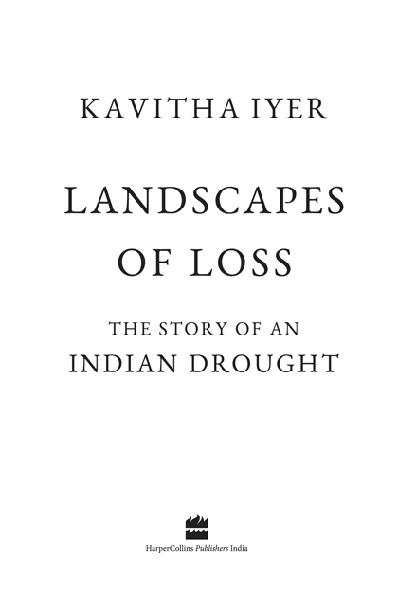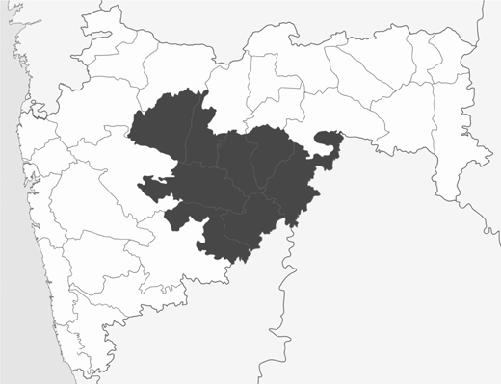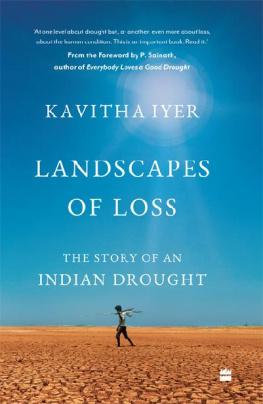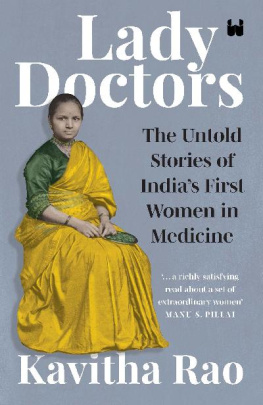For Indias annapurnas and annadatas the farmers we have failed.
S HE HAD PAID a full rupee for a litre of water and had picked up some fifteen litres. That wasnt the regular price but an extraordinary one, she patiently explained, seeing our startled expressions. At the start of the scarcity season in this Aurangabad area, Shantabai was paying 2025 paise a litre. But now, with scarcity at a peak, she stood for hours in the queue and paid whatever was demanded. The public taps are dry, she said.
Considering what the beer and alcohol factories were paying for water in the same region at the same time, that was quite a price. There were about ten of them at the time, in 2016, and they were paying 4 paise a litre for 35 million litres daily. They had, in fact, paid 1 paisa a litre for ages, before a non-governmental organization took the matter to the courts. Anyway, the issue was settled with them having to pay four times more. Yes, 4 paise.
Consider this: the highest extortionist rate that the poor agricultural worker Shantabai paid was twenty-five times higher than the standard rate the alcohol industry enjoyed for nearly two decades. The standard summer rate she said she normally paid was still five times greater than the highest rate the beer factories paid in 2016.
Public outrage over the grossly unequal access to water flared up across Maharashtra that year. The Indian Premier League was forced to shift games scheduled in the state to venues outside it. (Stadiums hosting major sporting events consume massive quantities of water.) The Aurangabad bench of the Bombay High Court called for a 60 per cent cut in water to liquor factories in twelve districts of Maharashtra. Buildings coming up with a swimming pool on every floor balcony pools were compelled to shelve that part of their plans, at least for a while. And after further protests, even the beer factories had to pay one and a half paisa more. The rate for them, since 2018, is 5.5 paise per litre. Im sure Shantabai is still paying the rates she did, or more.
Marathwada is painful proof that drought is not simply a natural calamity, that it is so largely driven by human agency and commercial greed. That insatiable plunder for profit has given rise to a thriving thirst economy. There are some months in the year when two sectors of Maharashtras thirst economy make profits that would stoke envy in Dalal Street and the many chambers-of-commerce fraternities: the borewell industry and the tanker industry.
It was in 2016 that I ran into new owners of borewell rigs (almost all of which come from a single town in Tamil Nadu Tiruchengode in Namakkal district) on the highways and backroads of Marathwada. One of them was pleased to share the information that he had bought a rig for Rs 1.4 crore and had recovered most of its cost in four months and would clear all remaining dues in another two. Farmers at the time were spending around Rs 1,50,000 in sinking a 500-foot borewell.
Three years earlier, I had come across the village of Takwiki in the Osmanabad district of Marathwada. There had been close to 1,500 borewells sunk in the village in just a few years. Most of them had failed. Between January and March alone, Takwiki had seen nearly 300 new bore points sunk in desperation to varying depths.
Farmer desperation rises in inverse proportion to both monsoon and groundwater levels. Thousands of borewells actually fail. Yet, those whose borewells fail often take yet another loan and sink a couple more. With interest rates ranging from 60 to 120 per cent there, an explosion of debt is the most predictable outcome. And borewell bankruptcies are many. They have even been a factor in several farmer suicides in Marathwada.
Meanwhile, in the town of Jalna alone, tanker operators selling water were touching sales of close to Rs 1 crore a day by 2016. All these rates have only gone up since then, but so have the profits reaped from exploiting scarcity.
The unchecked guzzling of groundwater in the region has even seen a few but worrying instances of striking what are called paleo-historic storages as the wells go deeper. That is, water which is many millennia old.
The largely in practice unregulated loot of groundwater saw officials of the Groundwater Surveys and Development Agency author reports in which they raised red flags. But in Marathwada, as always, those flags flew at half-mast.
Water is more often than not the single most explosive political issue in this country. The greatest inter-state political conflict in the south of India is the unending Cauvery water dispute between Karnataka and Tamil Nadu. There are also other less high-profile but very serious ones: the Krishna water dispute between Andhra Pradesh, Karnataka and Maharashtra has seen temporary solutions. But those wont hold as the water situation changes. The dispute over the Mulaperiyar Dam between Tamil Nadu and Kerala continues to simmer. Kerala and Karnataka have seen conflicts over the Kabini River.
A similar picture prevails, just less seen, across the rest of the country too. With Andhra Pradesh and Telangana now different states, all the water-sharing agreements and awards involving the formerly unified state have become twice as complicated. A generation has grown up with little idea of how the Khalistan movement in Punjab was able to capitalize on grievances over the sharing of Ravi and Beas river waters between the states of Punjab, Rajasthan and Haryana.
And then theres the question of how we use the water we do have. In the drought-prone parts of Marathwada region, we grow (among other things) lots of sugarcane, one of the greatest water guzzlers imaginable.
MARATHWADAS LARGELY CONSTRUCTED drought was a book that needed writing. Kavitha Iyer has now written it. And hers is an important book indeed. One based on very many years of meticulous field reporting, painstaking research and much empathy.
Kavitha does understand that the agrarian crisis in Marathwada and Maharashtra is only part of a nationwide trend. It is a strong point of this book that while recognizing the peculiarities of the region and their diverse impact, she does not delink them from whats happening in the rest of Maharashtra or the rest of the country. And this is far more important than it might appear to be at first.
She is also clear on how a chain of events deepened the distress in the state. And that the agony of the peasantry was not just due to natural calamity the generic drought but also profit- and policy-driven; pursuing a path of development has proved and continues to be extremely destructive.
This is Maharashtras poorest region, with a per capita income perhaps 60 per cent below the states average. Also, as she correctly points out: Some pockets of these districts (of Marathwada) show some of Indias worst levels of nutrition, education, sanitation and healthcare. Child marriage continues to be practised in many pockets of the region.
Kavitha understands and explains well that Marathwadas drought is deeply connected with issues of inequality. She points to the fact that the difficulties the regions four million farmers face daily are closely linked to its historical backwardness and deep-rooted, caste-based exclusions and discrimination. A place where water-intensive industries including beer and paper manufacturing are sited in the regions special economic zones while lakhs of residents migrate each year, so many of them fleeing acute water scarcity.















